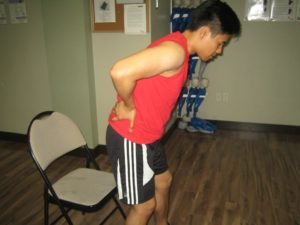For those who are not familiar with what femoroacetabular impingement is, you are not alone since many are not even aware what this is all about. On the other hand, it is good to note that femoroacetabular impingement (FAI) is a condition that can occur among athletes in various sports.
In simple terms, FAI is a condition where an abnormal bone growth on both the acetabulum (socket part of the pelvis) and femur puts them in contact with each other repeatedly. Due to the constant rubbing, it damages the articular cartilage on the round head of the femur as well as the labrum or the rim around the hip socket.
How femoroacetabular impingement occurs
It is a known fact that the hip is a ball and socket joint. For unknown reasons, some individuals develop extra bone tissue at the top part of the femur and around the edges of the hip socket. Understandable, these individuals are not born with the condition but it starts to manifest early in life as the individual grows.
The forceful rotation of the core including the hips worsens the femoroacetabular impingement. Take note that if the repetitive rotational movement occurs over several years, the area will become more irritated, thus the pain can be felt due to the bone to bone contact. If substantial cartilage was worn away from the top of the femur, pain is felt.
Who are at risk for femoroacetabular impingement?
Any sport that involves forceful body rotation increases the risk for FAI but only if the individual is included in the small percentage of people in which the condition is present.
Sports such as baseball, golf, volleyball, football, hockey, soccer, field hockey, lacrosse, rowing, martial arts and tennis can aggravate the condition. Additionally, performing deep squatting that is included during power lifting can irritate the area.
Symptoms of FAI

- Low back pain
- Pain on the side of the hips
- Increased pain or stiffness after physical activity or extended period of sitting
- Stiffness or pain in the groin area in front of the hip
Treatment for FAI
Short-term relief for the condition is possible by instructing the individual to rest and avoid any movement that involves hip rotation. Over-the-counter medications such as naproxen, aspirin, acetaminophen and ibuprofen can be given to minimize the pain and inflammation. Other related injuries to the ligaments and muscles can be treated by first aid measures that you can learn by enrolling in a first aid class.
As for long term treatment, it usually involves open surgery but it would take about 9 months before the individual can resume participation in sports.
Can FAI be prevented?
Femoroacetabular impingement cannot be prevented. Nevertheless, the risk can be minimized by engaging in sports that will not worsen the condition. In some cases, individuals who could not avoid a particular sport must follow a training program that will minimize the risk of permanent damage.
